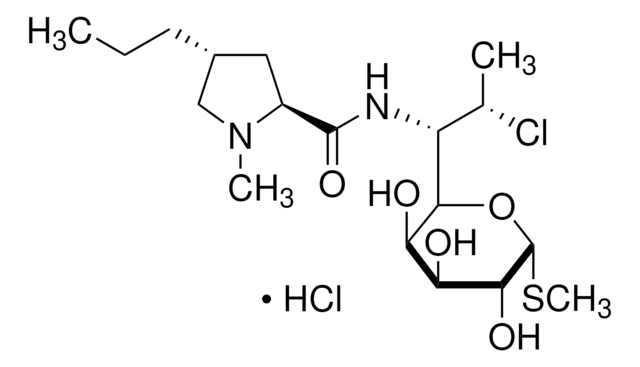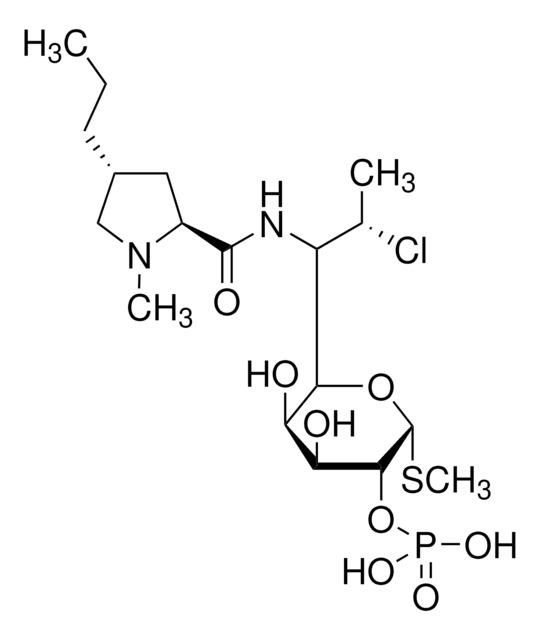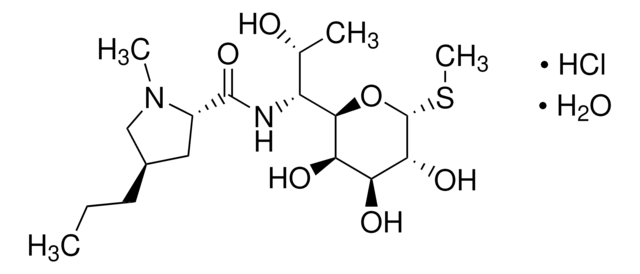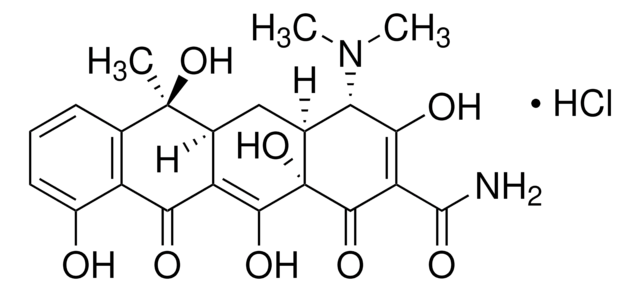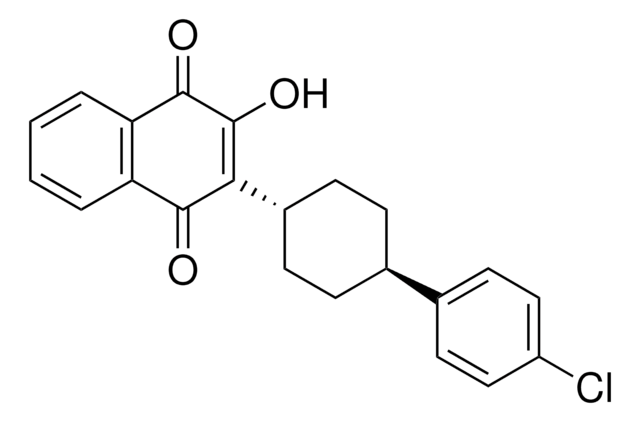PHR1159
Clindamycin hydrochloride
Pharmaceutical Secondary Standard; Certified Reference Material
Synonym(s):
Clindamycin hydrochloride monohydrate, (7S)-7-Chloro-7-deoxylincomycin hydrochloride monohydrate
About This Item
Recommended Products
grade
certified reference material
pharmaceutical secondary standard
Quality Level
Agency
traceable to Ph. Eur. C225000
traceable to USP 1136002
API family
clindamycin
CofA
current certificate can be downloaded
technique(s)
HPLC: suitable
gas chromatography (GC): suitable
application(s)
pharmaceutical (small molecule)
format
neat
storage temp.
-10 to -25°C
InChI
1S/C18H33ClN2O5S.ClH.H2O/c1-5-6-10-7-11(21(3)8-10)17(25)20-12(9(2)19)16-14(23)13(22)15(24)18(26-16)27-4;;/h9-16,18,22-24H,5-8H2,1-4H3,(H,20,25);1H;1H2/t9-,10+,11-,12+,13-,14+,15+,16+,18+;;/m0../s1
InChI key
KWMXKEGEOADCEQ-WNNJHRBUSA-N
Looking for similar products? Visit Product Comparison Guide
General description
Clindamycin is a common antibiotic drug generally employed for the treatment of infections caused by gram-positive aerobes and both gram-negative and gram-positive anaerobic pathogens.
Application
Analysis Note
Other Notes
Footnote
related product
Storage Class Code
11 - Combustible Solids
WGK
WGK 3
Flash Point(F)
Not applicable
Flash Point(C)
Not applicable
Choose from one of the most recent versions:
Certificates of Analysis (COA)
Sorry, we don't have COAs for this product available online at this time.
If you need assistance, please contact Customer Support.
Already Own This Product?
Find documentation for the products that you have recently purchased in the Document Library.
Customers Also Viewed
Our team of scientists has experience in all areas of research including Life Science, Material Science, Chemical Synthesis, Chromatography, Analytical and many others.
Contact Technical Service